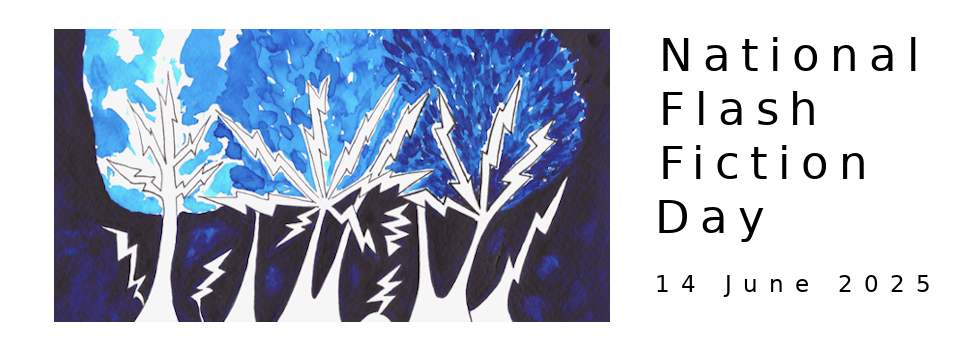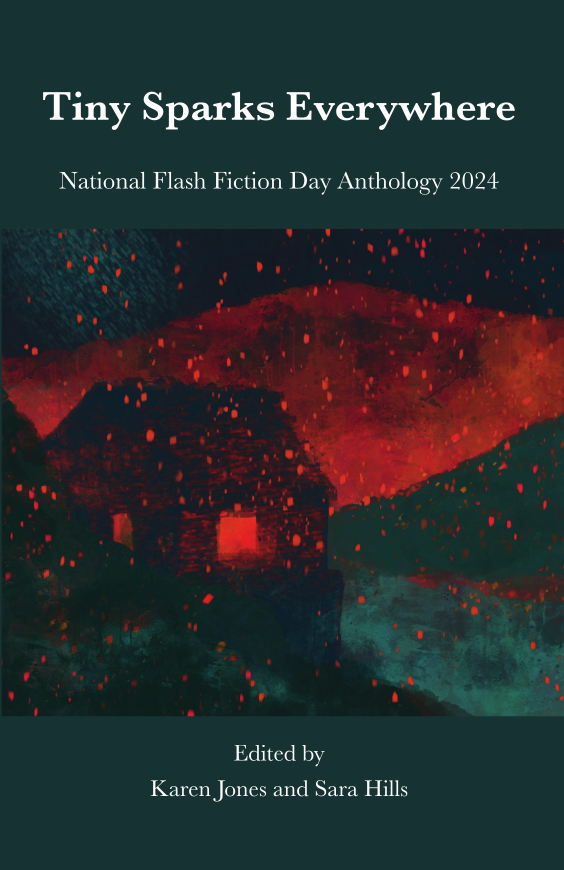After reading scads of brilliant stories on the theme of AIR, EARTH, WATER AND FIRE, editors Karen Jones and Sara Hills have finalised their selections for the 2024 National Flash Fiction Day anthology and for the third annual Editors' Choice Awards.
Below is the list of the stories that will appear in this year's anthology, alongside the 2024 Microfiction Competition winners (yet to be announced). We will be contacting everyone on the list via email, so you should hear from us soon if you haven't already, but in the meantime, congratulations to all the authors listed below.
Special congratulations to our two Editors' Choice Award Winners:
- Sara Hills chose 'White Noise' by Rosaleen Lynch
- Karen Jones chose 'Containers for Smoky Memories' by Lisa Ferranti
Thank you so much to everybody who submitted their stories for consideration for this year's anthology. It was an honour to read each and every piece. Thank you for sharing your work with us! If you didn't make the anthology this time, don't forget that there are still opportunities to join us in celebrating National Flash Fiction Day, including FlashFlood and The Write-In.
We hope that you will all join us for the launch of the anthology on National Flash Fiction Day later this year!
2024 National Flash Fiction Day Anthology Line Up
- Air Bubbles by Slawka G. Scarso
- Arctic Convoys by Angi Holden
- Baste, Bind, Burn by Nan Wigington
- Big Guy by Frances Gapper
- Blown Apart by Kim Steutermann Rogers
- Containers for Smoky Memories by Lisa Ferranti
- Cyrtanthus Ventricosus by Sonora Hills
- Dragon Girl by Stephanie Carty
- Elements of Goodbye by Karen Crawford
- English Towns Flooded After Heavy Rainfall by Hetty Mosforth
- Fifth Element in Paternity Confusion Shocker by Adam Trodd
- From Tiny Acorns by Helen Chambers
- Gaia is Going Through the Menopause by Alison Woodhouse
- Hollowware by Ali McGrane
- Hybrid by Michelle Walshe
- Hypoxia by Jo Gatford
- Incineration is Not Obliteration by Anne Howkins
- In Memory of Empedocles by Tina M Edwards
- In Search of Dara Amongst the Lost Cillini of County Mayo by Helen Kennedy
- It May Be a Biblical Site, but if the Rain Doesn’t Come, No one Will Be Singing by Emma Phillips
- Mr Porter Rakes Leaves in the Park by Cheryl Markosky
- My Father the Elementalist by Steven Patchett
- My Husband Was a Snow-capped Mountain by Anita Goodfellow
- My Son is a Gull, a Black Iris by Angela Joynes
- My Son is a Sieve by Melissa Flores Anderson
- Namazu the Earthshaker by Andy Lavender
- Off a Duck’s Back by Jupiter Jones
- Passing Places by Sharon Telfer
- Puppy Love and Biblioclasm by Edward Barnfield
- Pyre by Jenna Muiderman
- Quintessence by Marie Gethins
- Rain Dancing by Maria Thomas
- Reasons to Rescue Strangers by Judy Darley
- Something New to Worry About by Andrea Marcusa
- Stepping Stones by Slawka G. Scarso
- Still Life by Anne Daly
- Stone Nest by Catherine Ogston
- Swiftly, Swiftly Over Ice by Linda M. Bayley
- Tally by Marissa Hoffmann
- The Dawning by Audrey Niven
- The Digging of Small Holes by Debra A. Daniel
- The Elephant by Sharon D. Sheltzer
- The Heaviness of Sleep by Talia Nash
- The Jigsaw Puzzle by Sumitra Singam
- The Marriage Mandala by Eleonora Balsano
- The Night Ledger by Elizabeth Fletcher
- The Outside Lane by Jude Higgins
- The Piano in the Room by Sarah Leavesley
- They Sold the Sky by Kate Axeford
- Tiny Sparks Everywhere by Jennifer Brutschy
- Today and Tomorrow by Karen Whitelaw
- Waiting for the Earth to Put On Its Breaks by Sally Reiser Simon
- When Finley Davey Said He'd Turn Into a Cicada by Emma Phillips
- When the Kingfisher Dives by Eleanor Luke
- White Noise by Rosaleen Lynch

